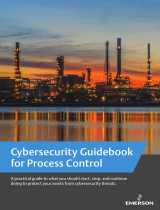
Solution Showcase: Automating Security for DevOps: Best Practices for Securing the CI/CD Pipeline 4
© 2018 by The Enterprise Strategy Group, Inc. All Rights Reserved.
Research participants cited plans to vet server workloads pre-deployment by identifying configuration and software
vulnerabilities. For runtime controls, 44% of respondents stated plans to apply preventative controls and 44% also
reported plans to apply controls that detect anomalous activity. Further along the attack chain, 39% of organizations also
indicate plans to capture system activity to ready themselves for incident response investigations. Bolting in security via
DevOps means aligning with the stages of the CI/CD pipeline and their associated environments to automate these use
cases cited by participants in ESG’s research.
Pre-deployment via SDLC Integrated Controls
Development Stage
Integrating security controls within the software development lifecycle (SDLC) should include automating the following
security practices:
• Static analysis to identify inadvertently introduced vulnerabilities within the IDE (integrated development
environment). Successful code scans should be a requirement for checking code into a source code repository.
• Composition analysis to establish a bill-of-materials inventory of all the components of a build tree, including the
inclusion of open source software (OSS) that may include vulnerabilities.
Testing Stage
As part of the build process and testing phase, server workloads,
inclusive of application code, should be verified for system integrity
and hardened before deployment to production by vetting compliance
with industry-standard configuration benchmarks such as those
defined by the Center for Internet Security. Because many
organizations treat production server workloads as immutable
infrastructure in that they are not patched once deployed, known software vulnerabilities should be identified and
applicable patches installed pre-deployment. These steps should also be applied for application containers by scanning
registry-resident container images. Organizations should not trust images sourced from a public registry and should also
assess their trustworthiness via these steps. Successful automated configuration assessments and vulnerability scanning
should serve as the green light to ship containers and workloads to production environments.
Runtime via Automation/Orchestration Integrated Controls
Having “shifted security left” by automating security checks before deployment, scrum teams should also implement user
stories that define the automated introduction of runtime cybersecurity controls via integration with the orchestration
tools that ship code to production. Runtime security for server workloads includes anti-malware, anti-exploit, drift-
prevention (e.g., file integrity monitoring), application control, and access segmentation controls. Central to automatically
applying the right policy for a specific server workload is the use of
name:value pair tags that denote the role and environment of a
workload. Automating the application of runtime controls via policy-
driven tags assures that server workloads are protected upon
deployment to production. And this also applies to securing the
automation environment itself, which represents a vector for adversaries. Integrating runtime controls in the staging phase
to automate securing production workloads is essential to keep pace at scale.
Successful automated configuration assessments and
vulnerability scanning should serve as the green light
to ship containers and workloads to production
environments.
Automating the application of runtime controls via
policy-driven tags assures that server workloads are
protected upon deployment to production.







